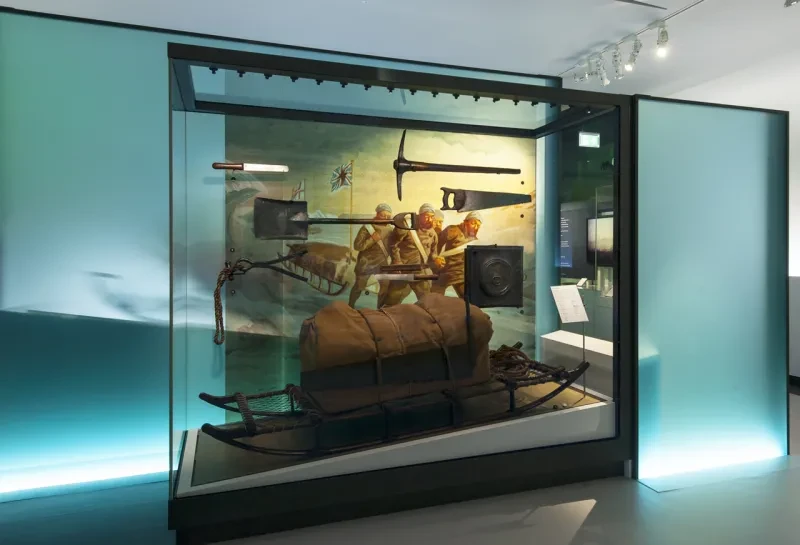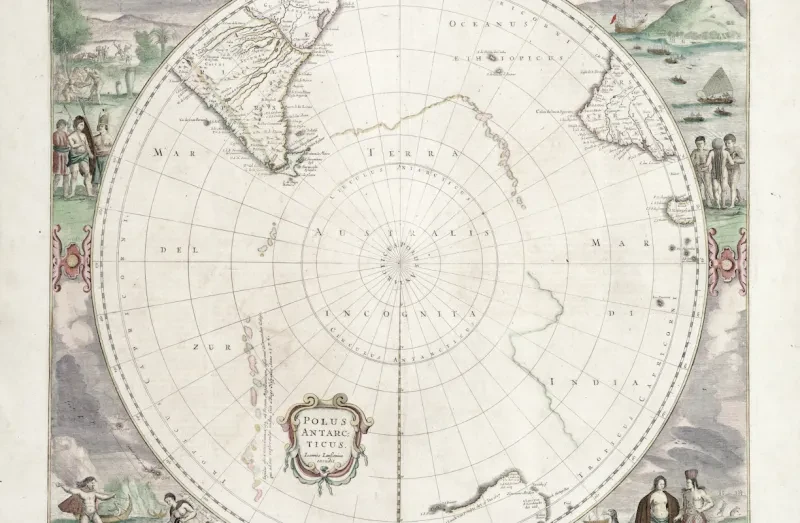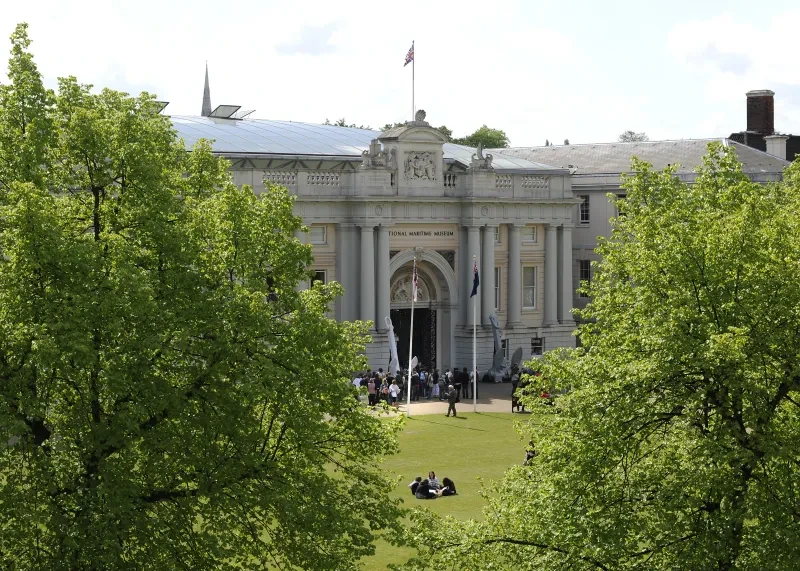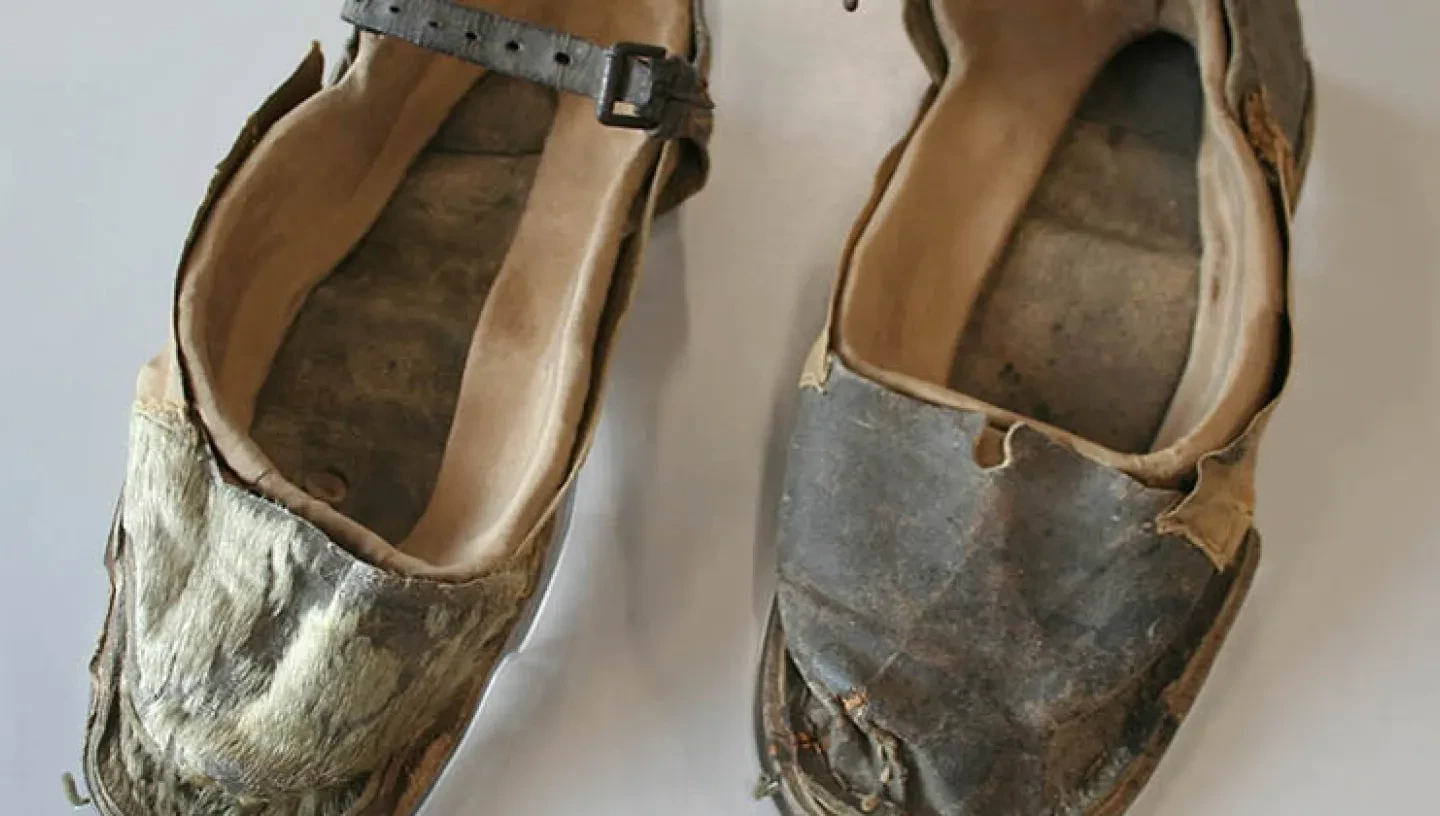
Learn how explorer Robert Falcon Scott's ski overshoes were prepared for display in the new Polar Worlds gallery
Clothing is a deeply personal matter. Even more so, if clothing is to protect the body in extreme conditions, helping the wearer to survive in such a hostile environment as the Antarctic region.
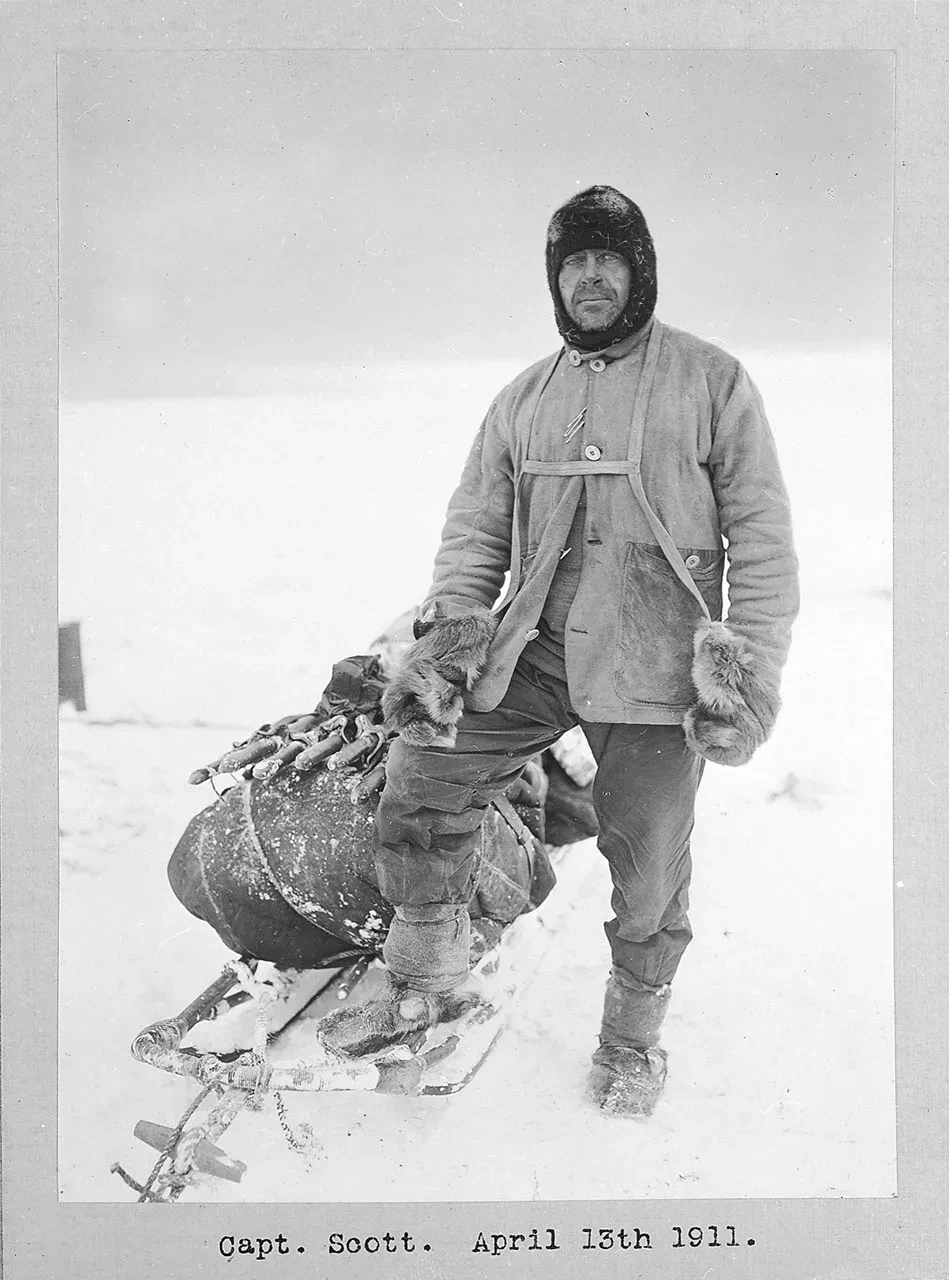
Scott and his team of four men were the first British explorers to reach the South Pole on the 17 January 1912 (although preceded by the Norwegians led by Roald Admundsen). Sadly, Scott and his fellows all died on their return march from the South Pole due to extreme cold and hunger.
Scott’s ski overshoes were reputedly found with his body in the tent, when they were discovered by the search expedition. The overshoes would have been worn over finnesko boots – soft, furry, warm boots stuffed with senna grass, widely used in their native home in Lapland.
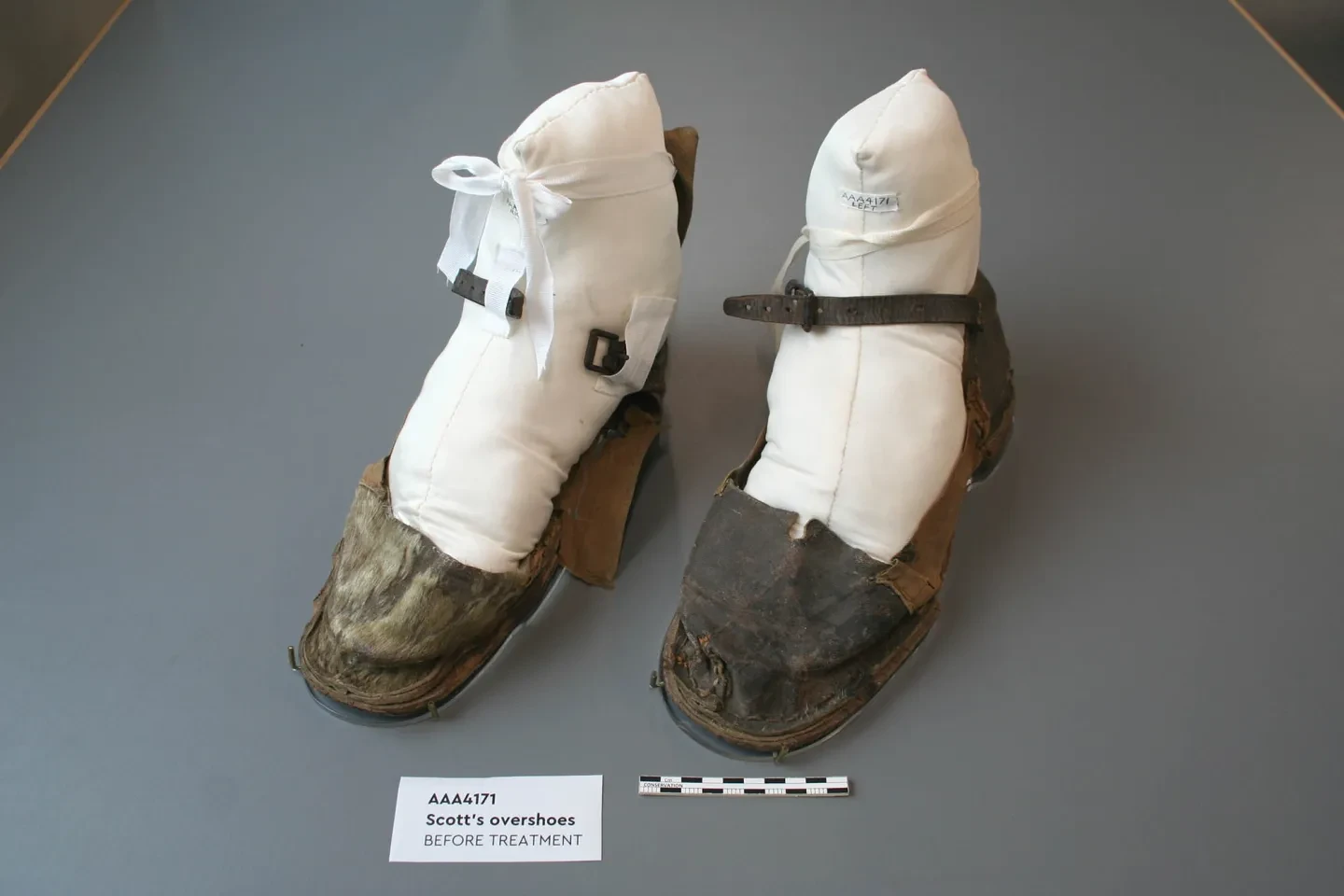
The overshoes worn by Scott are likely to have been made at the Antarctic camp during the winter of 1911, from materials that were available for use such as seal skin, canvas, leather, small pieces of wood and metal buckles, assembled using wires and twine. The construction of the overshoes is simple, but they are durable and would have served a purpose to protect the feet and to attach to the skis.
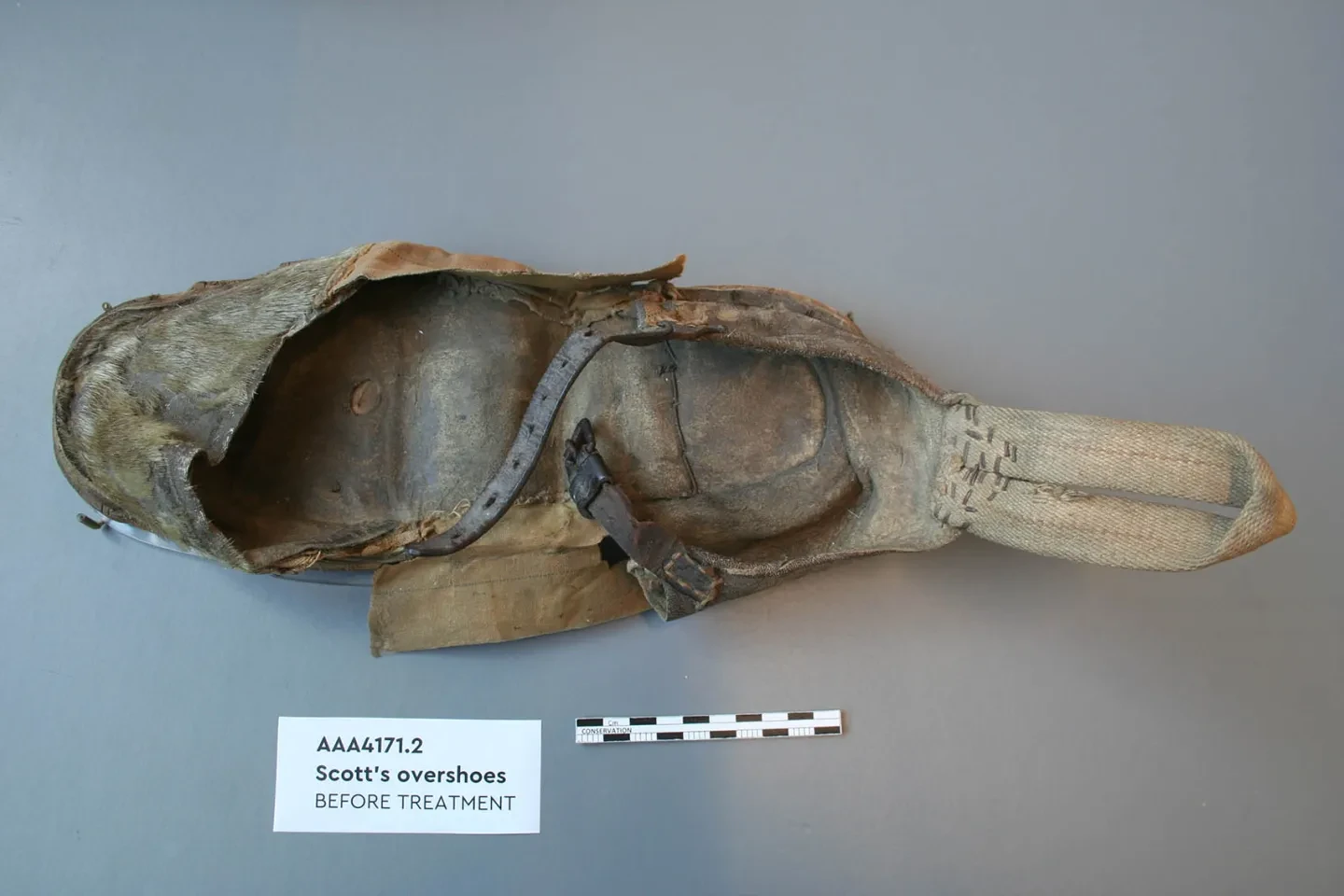
The conservation of the overshoes started with surface cleaning. Close-up examination revealed that they had been badly infested by clothes moths in the past, which explained why the hair from the seal skin was missing in large areas (besides hair loss attributable to wear and ageing). Moth remains included larvae cases and frass, which I removed with fine tweezers and low power vacuum suction, collecting and preserving a bagful for future enquiries!
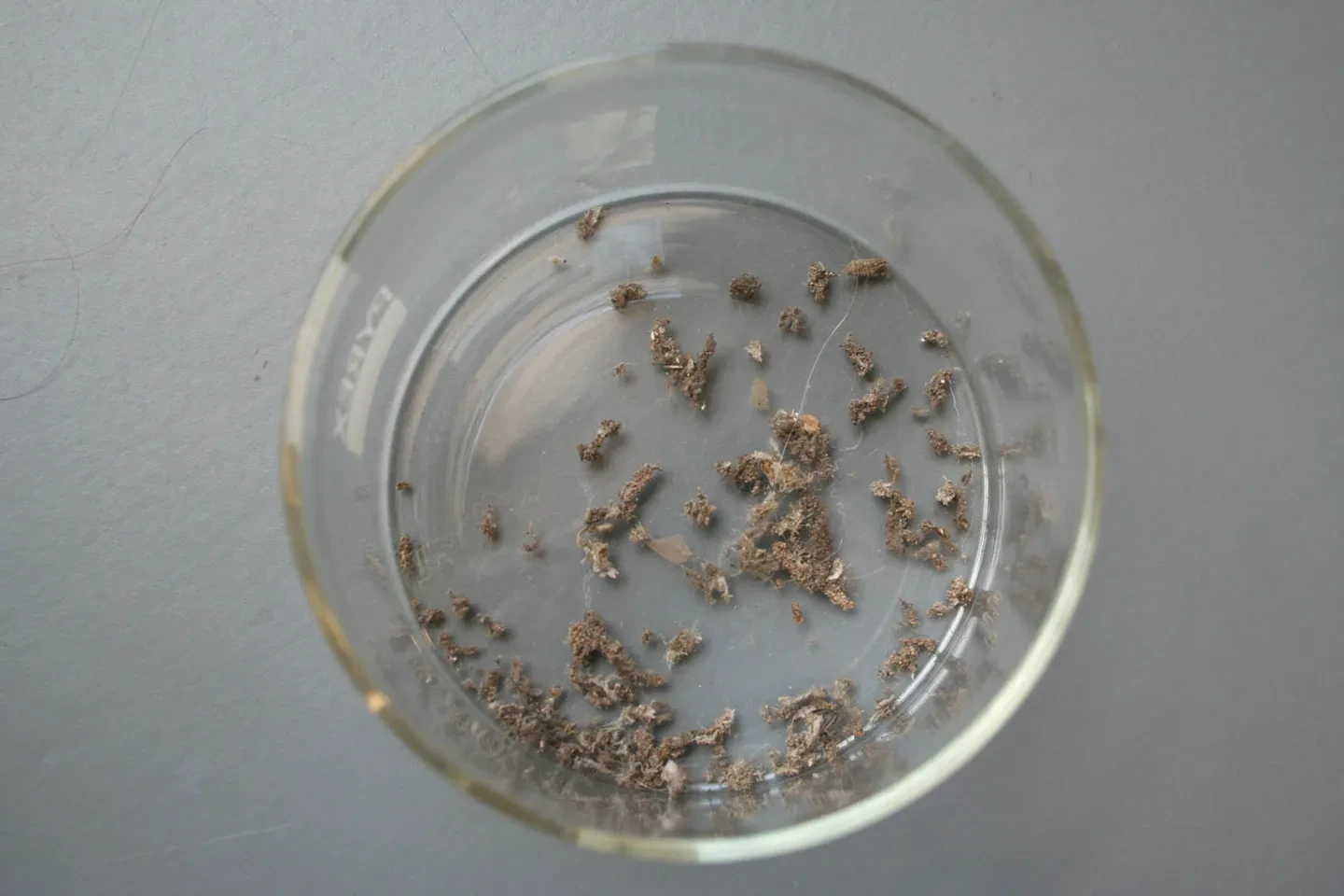
The overshoes had undergone a conservation treatment 15 years ago, when the fragile original canvas sides were adhered onto new, sheer, colour-matched fabric backings. The treatment still holds firmly apart from one side where the fragments have become loose and vulnerable.
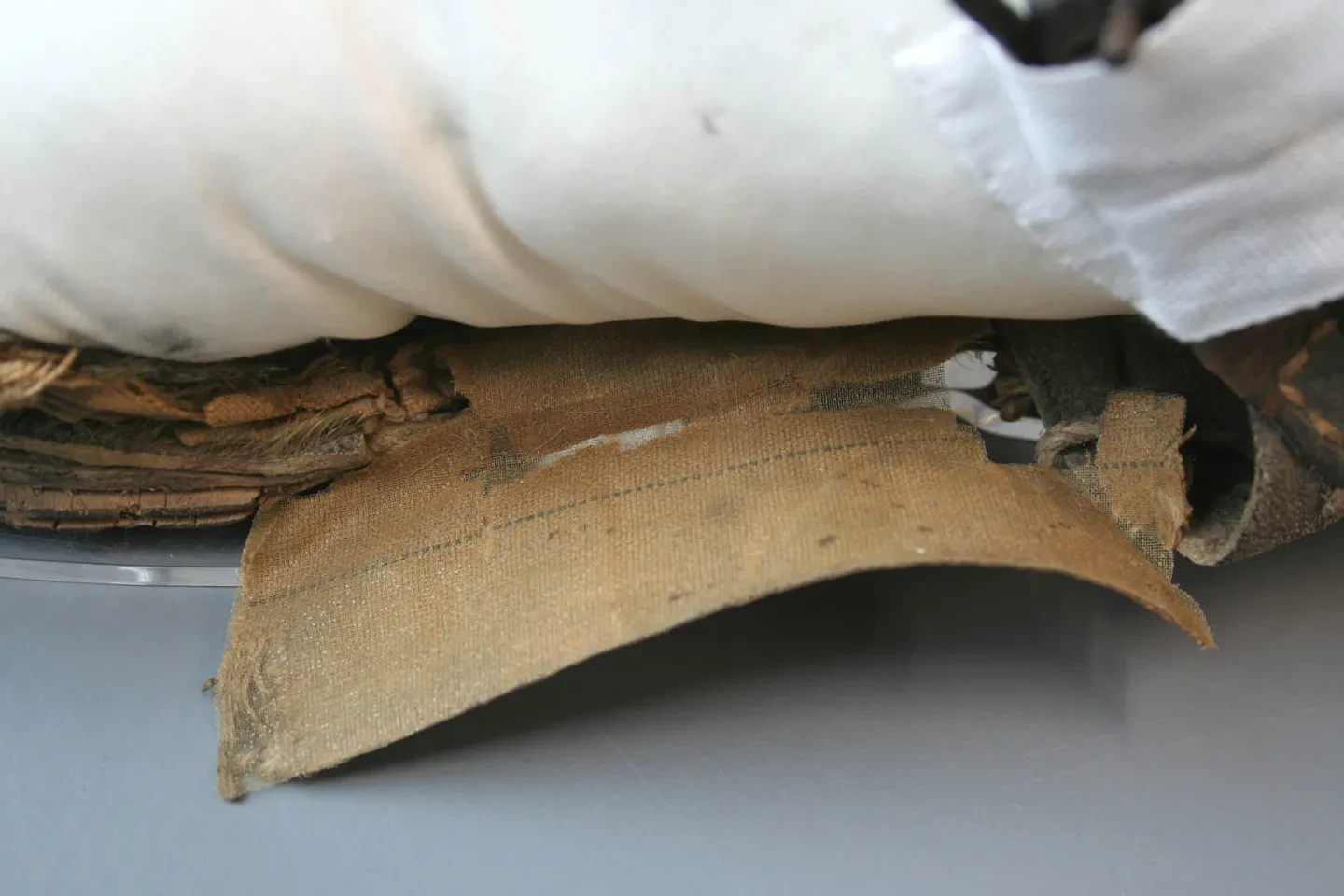
I secured this side with a stitched support, encasing the original canvas fragments between two layers of sheer silk fabric which was colour matched to the original. By stitching around the fragments, I could minimise stitching into the original materials. I used silk thread of the same colour so that the stitching becomes invisible when viewed from a distance.
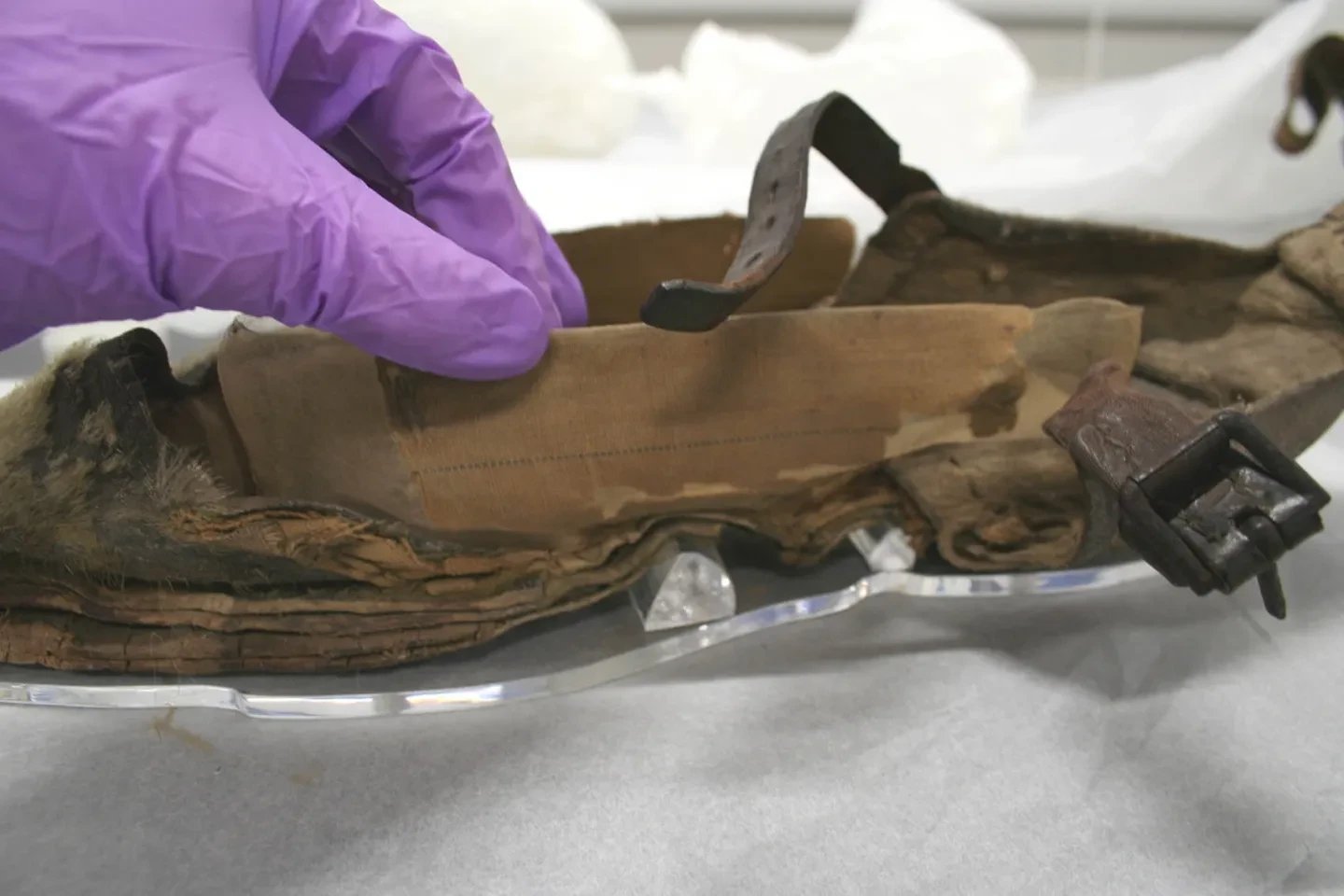
The overshoes are very misshapen, and although the seal skin is rather stiff they are prone to collapse further unless supported on an internal mount. The most challenging part of the conservation treatment was the making of these mounts, as they had to be strong to provide physical support but also smart looking so they can go on display. I also aimed to cover as little of the original construction as possible, for example be leaving the insoles free.
The mounts were made in two parts: small solid mounts that disappear inside the toes were made of a conservation-grade polyethylene foam, padded with polyester wadding and covered with a silk fabric dyed to a matching brown colour. These small toe supports follow the exact internal shape of the toes and are easy to slide in and out.
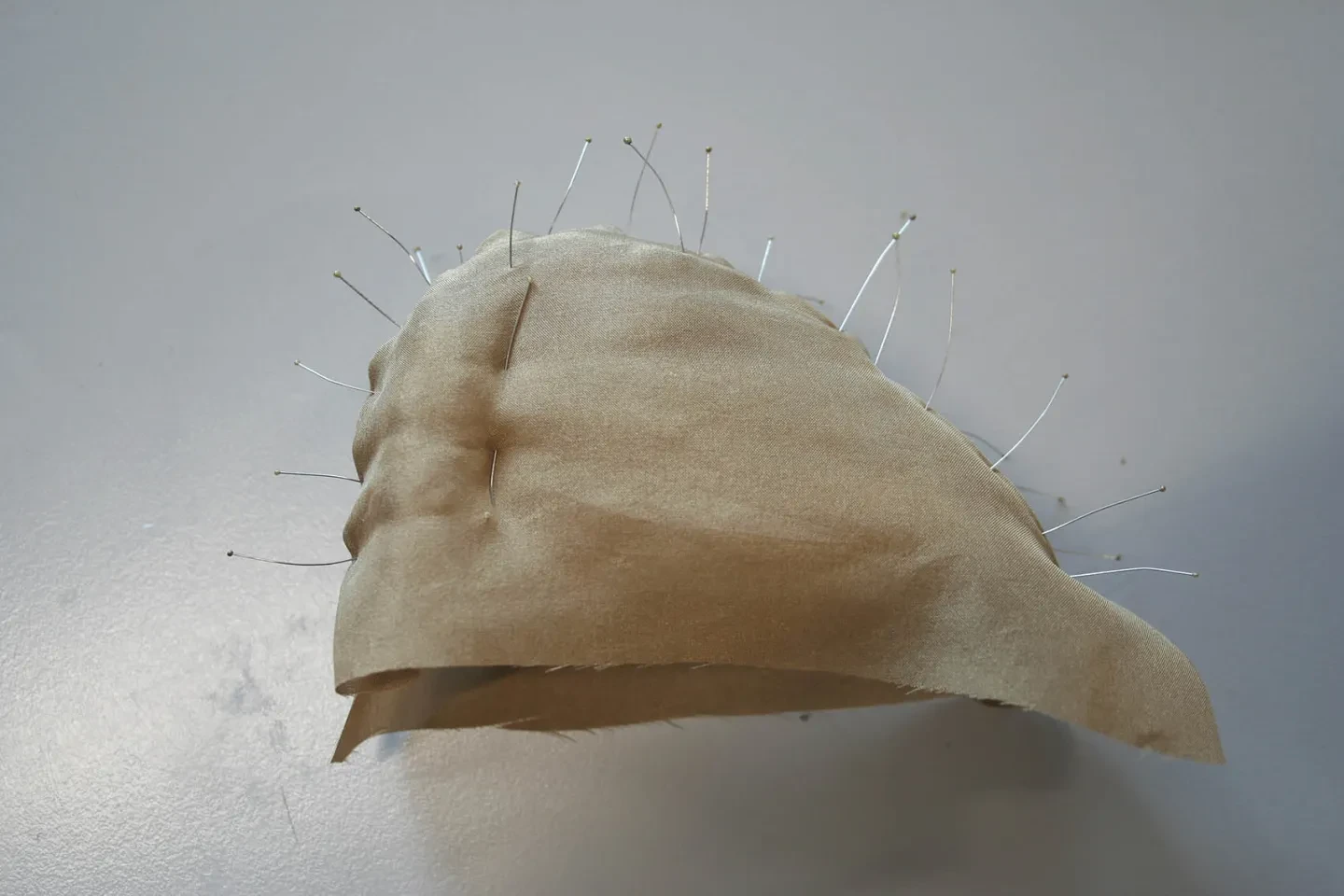
To support the rest of the upper (seal skin heels and canvas sides), I experimented with different mount making techniques and cast my vote for a method called ‘buckram’ mount. This is a technique similar to papier-mâché but using small pieces of linen fabric (instead of paper) and wheat starch paste as an adhesive.
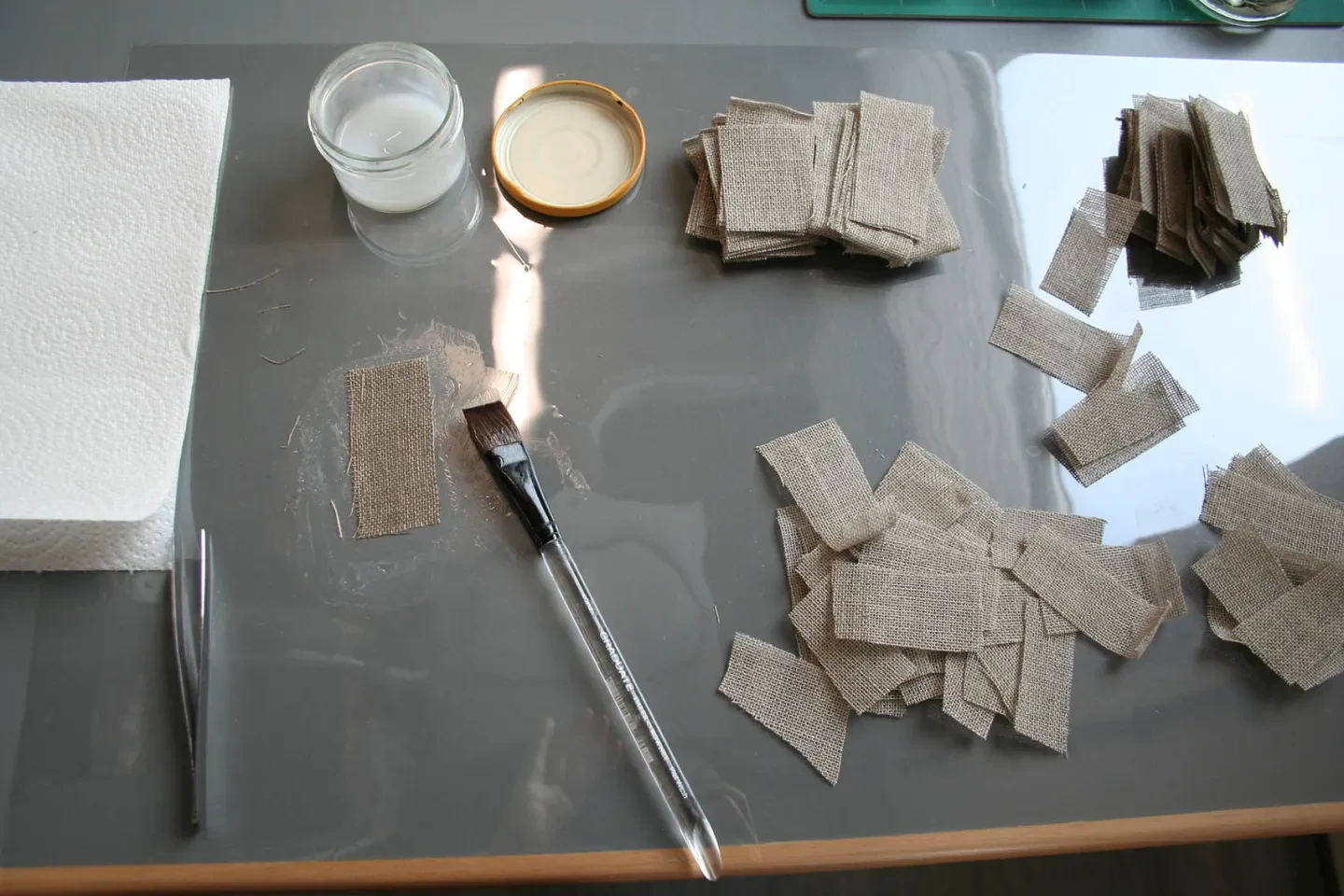
To create the supports, I lined the insides of the shoes with a thin polyester film. Starting from the heels, I brushed each piece of linen with the starch paste and placed them inside the shoes, changing the direction of the linen pieces to provide extra strength.
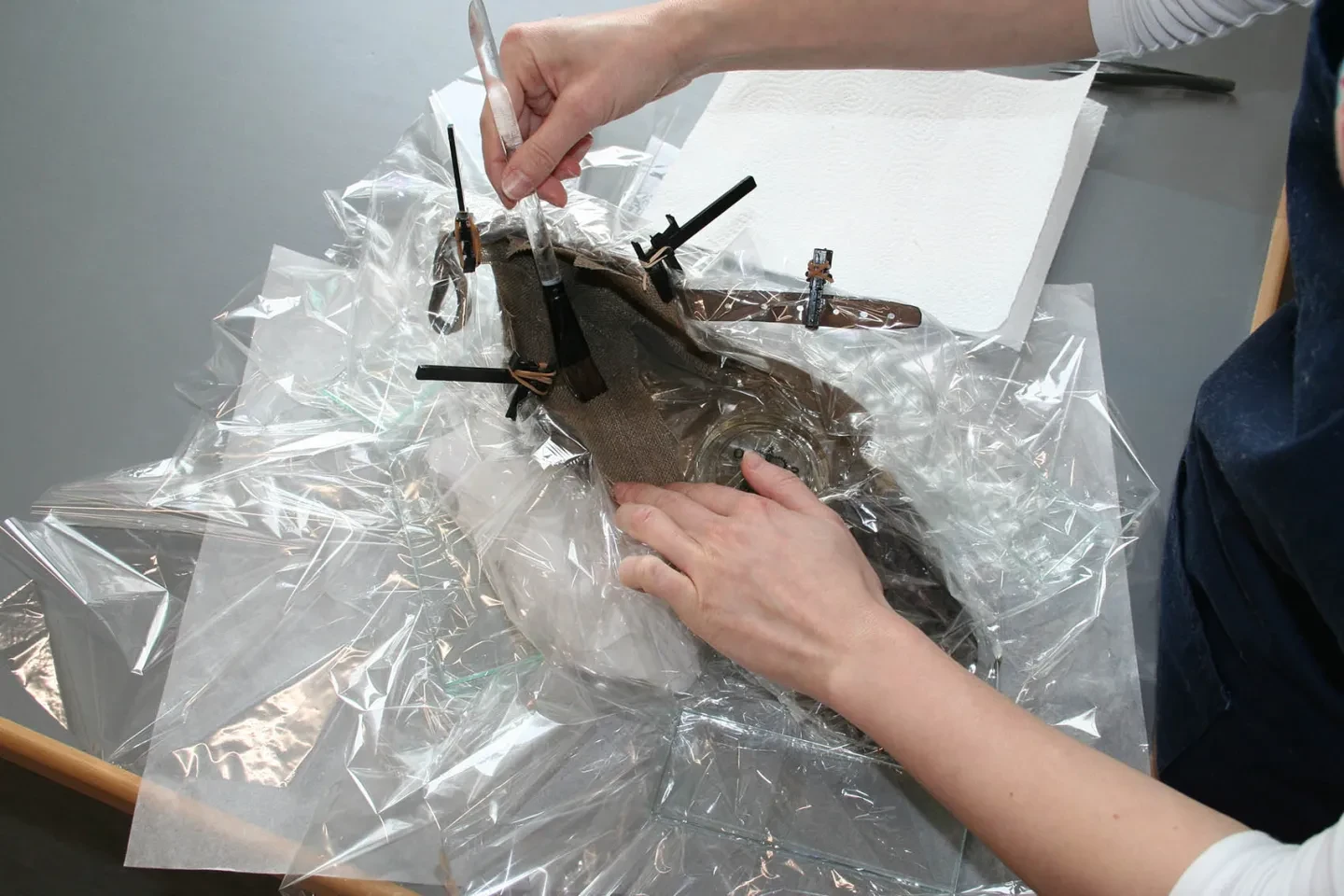
After building up 3-4 layers, I stuffed the insides with some nylon net which helped to hold the desired shape while allowing for air circulation. Once the mounts were almost dry, I took them out of the shoes and dried them completely with a cold air fan.
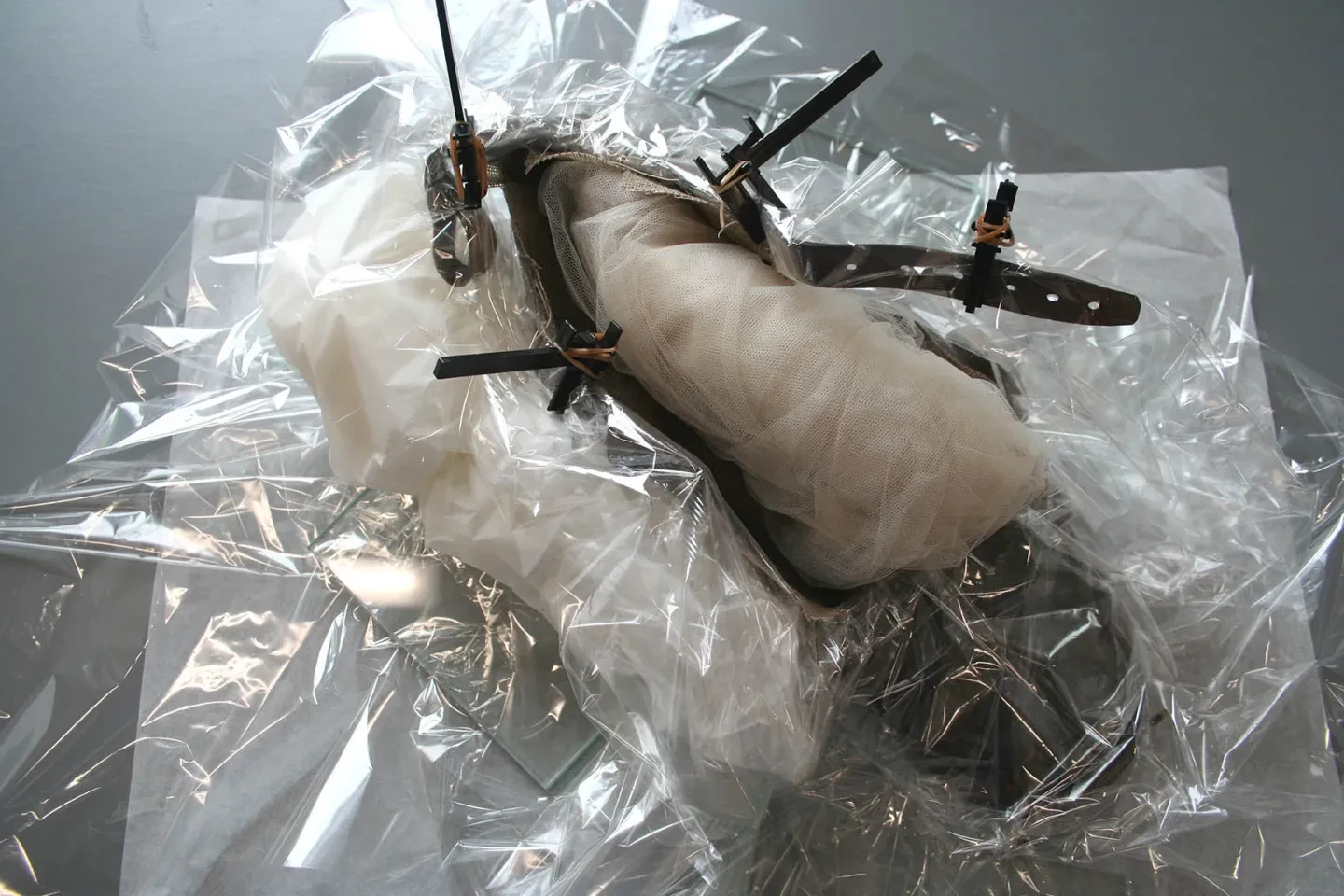
Placing them back into the overshoes I marked where the mounts needed to be cut and trimmed them with scalpels and scissors. It was not an easy job as the mount was quite hard to cut through!
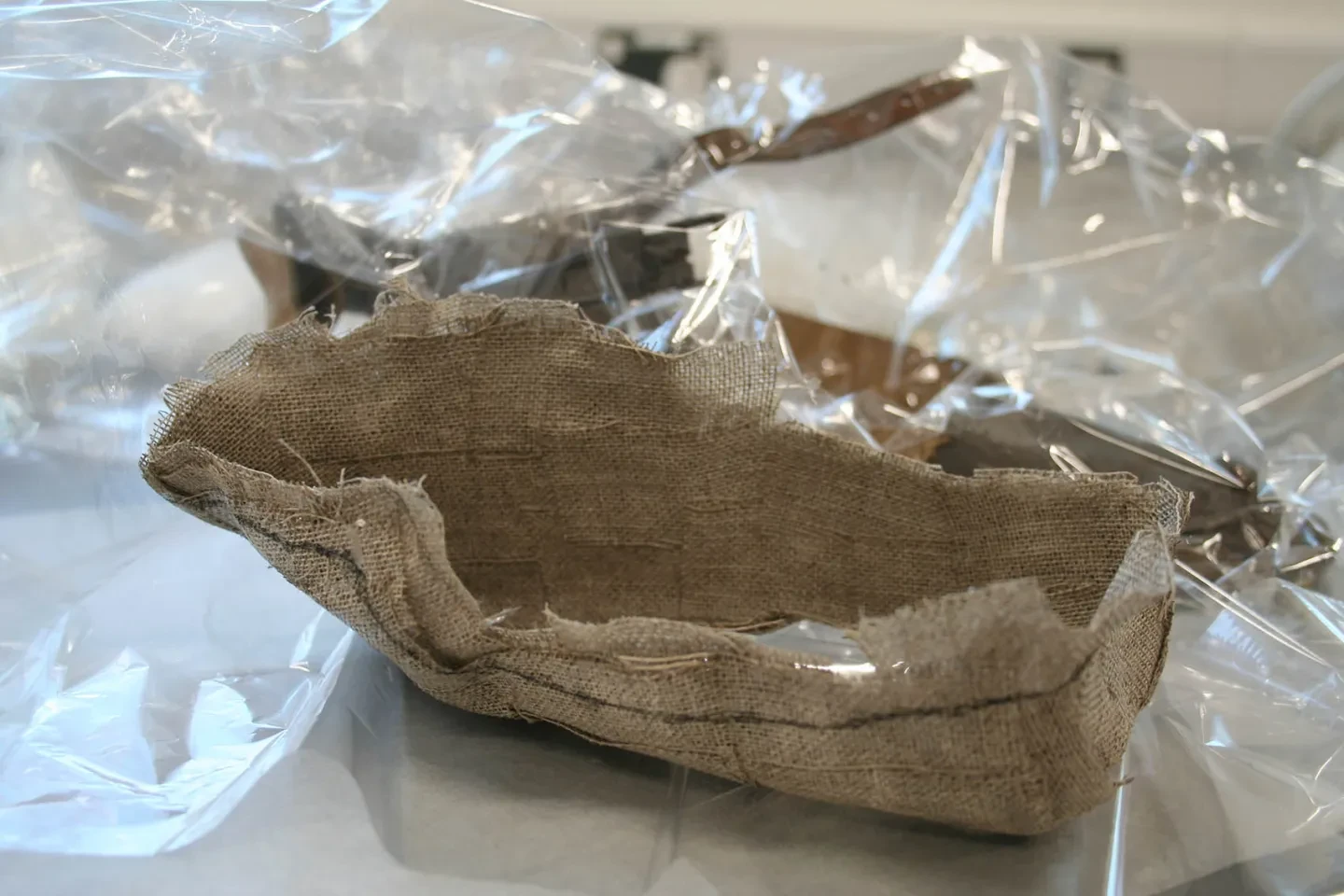
To make the buckram shapes softer, I covered them with a brushed cotton fabric.
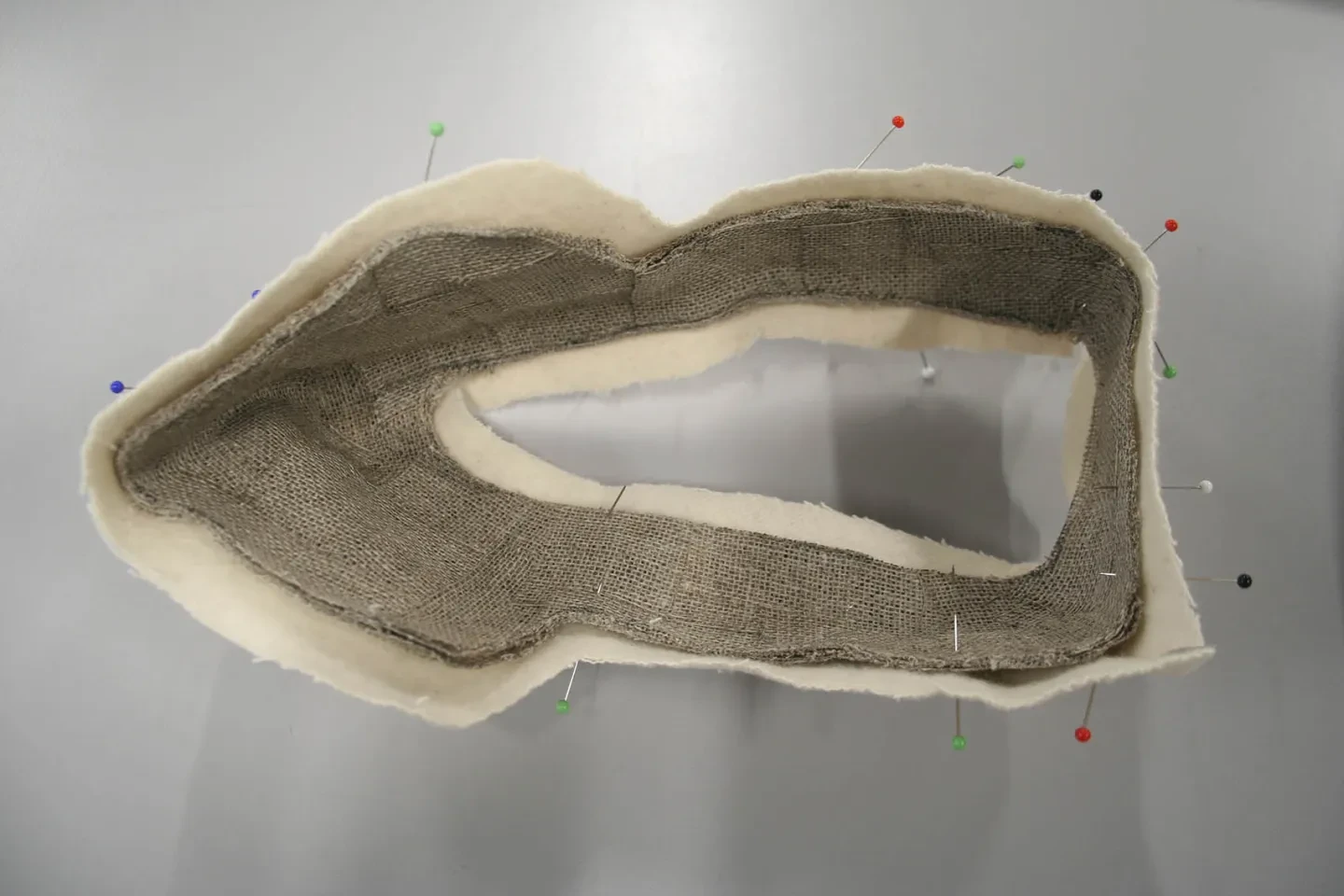
Next came the need to support the leather straps and for this I asked help from our Mount Maker, Will Lawlor. He made us supports from brass which we bent to the desired shape, and he punched small holes into their ends, so I could stitch them onto the inside of the mounts. We padded and painted them, so they blend in well.
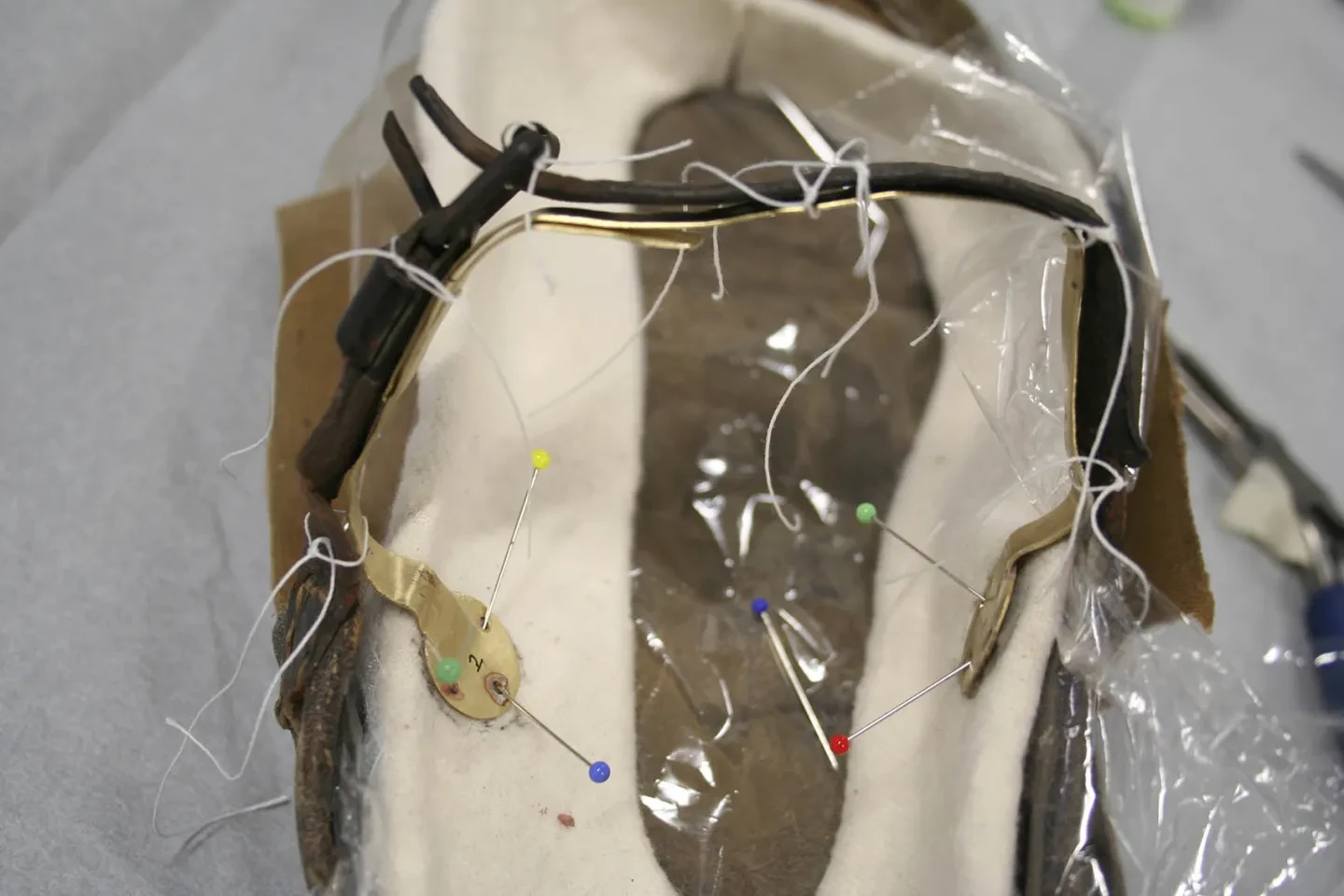
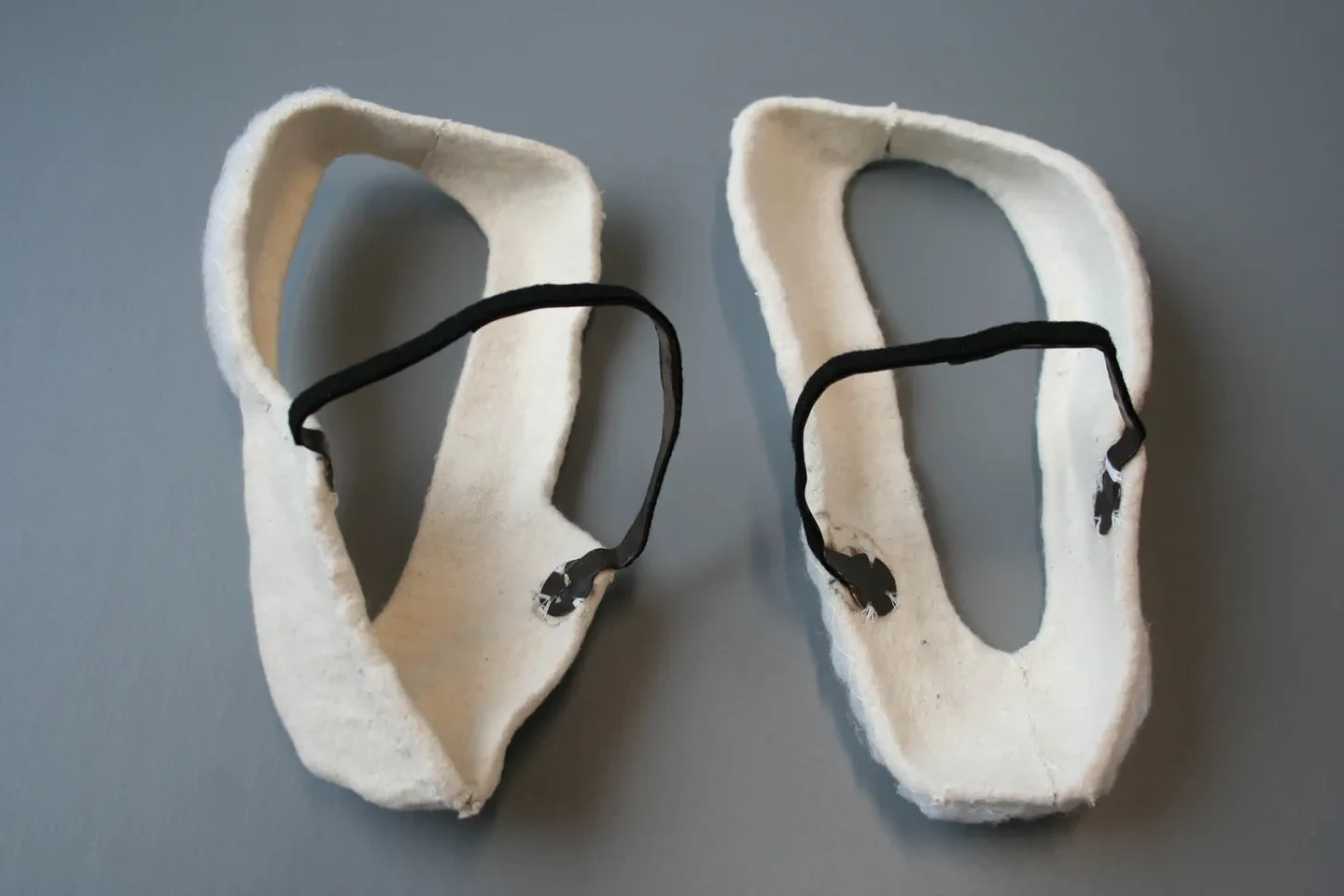
The final touch was covering the mounts with a dyed silk fabric, which was a challenge due to their three-dimensionality. With the help of small pins and after taking some deep calming breaths, the mounts were finished.
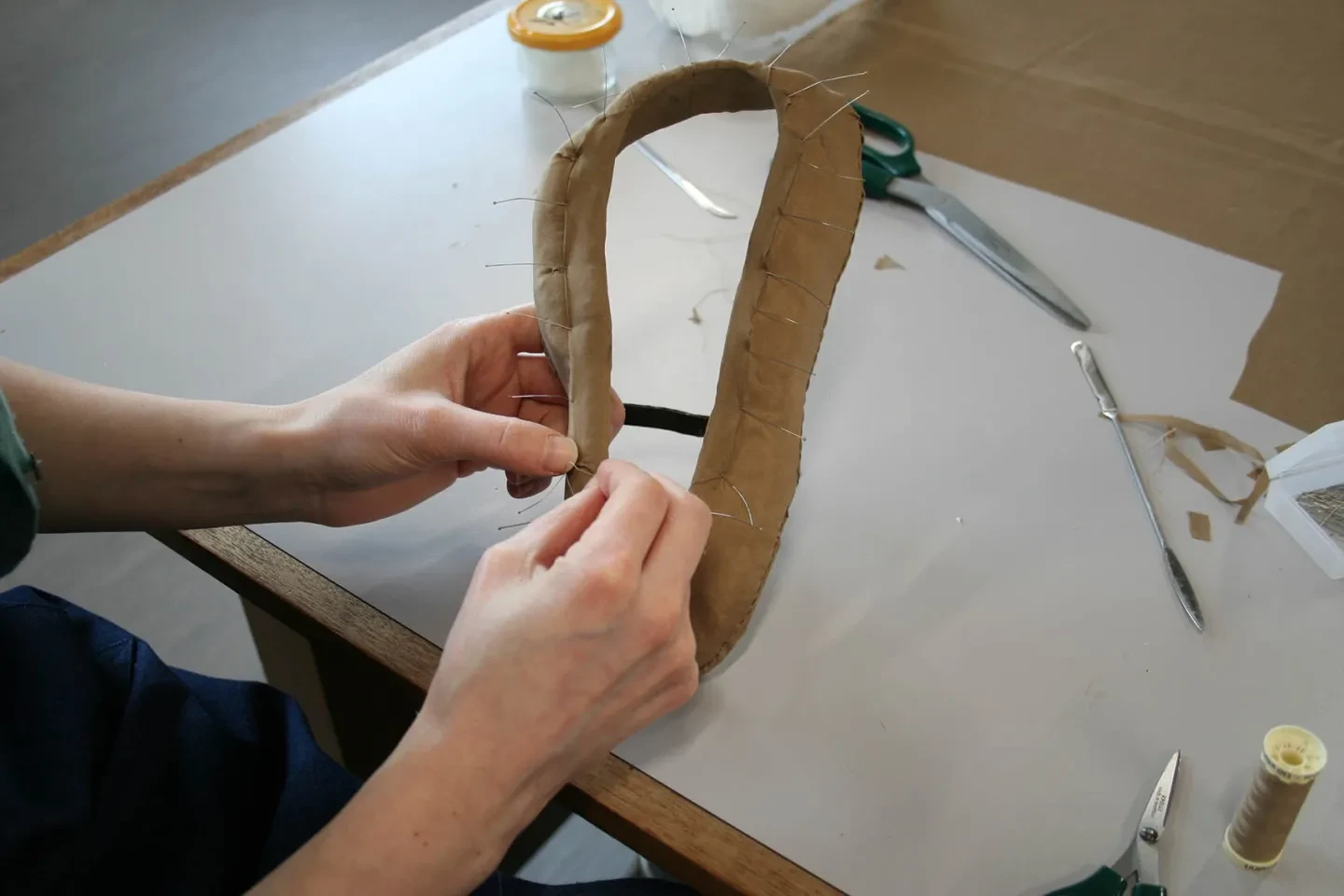
I placed the mounts inside the overshoes, secured the leather straps in place with a few thread loops and attached the supported canvas side to the mount with a couple of stitches.
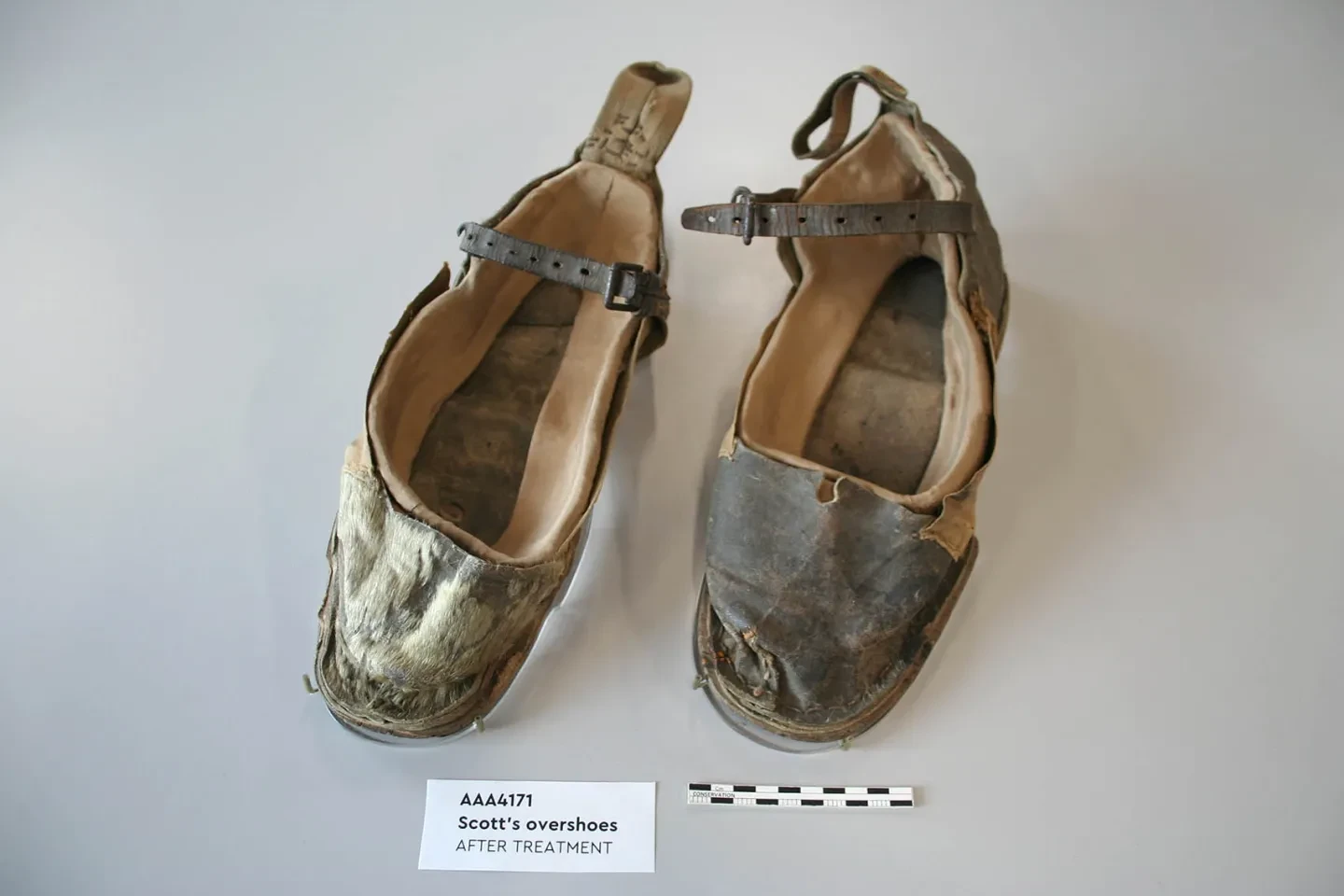
Scott’s overshoes are now on display in the Kristian Gerhard Jebsen: Polar Worlds gallery.
